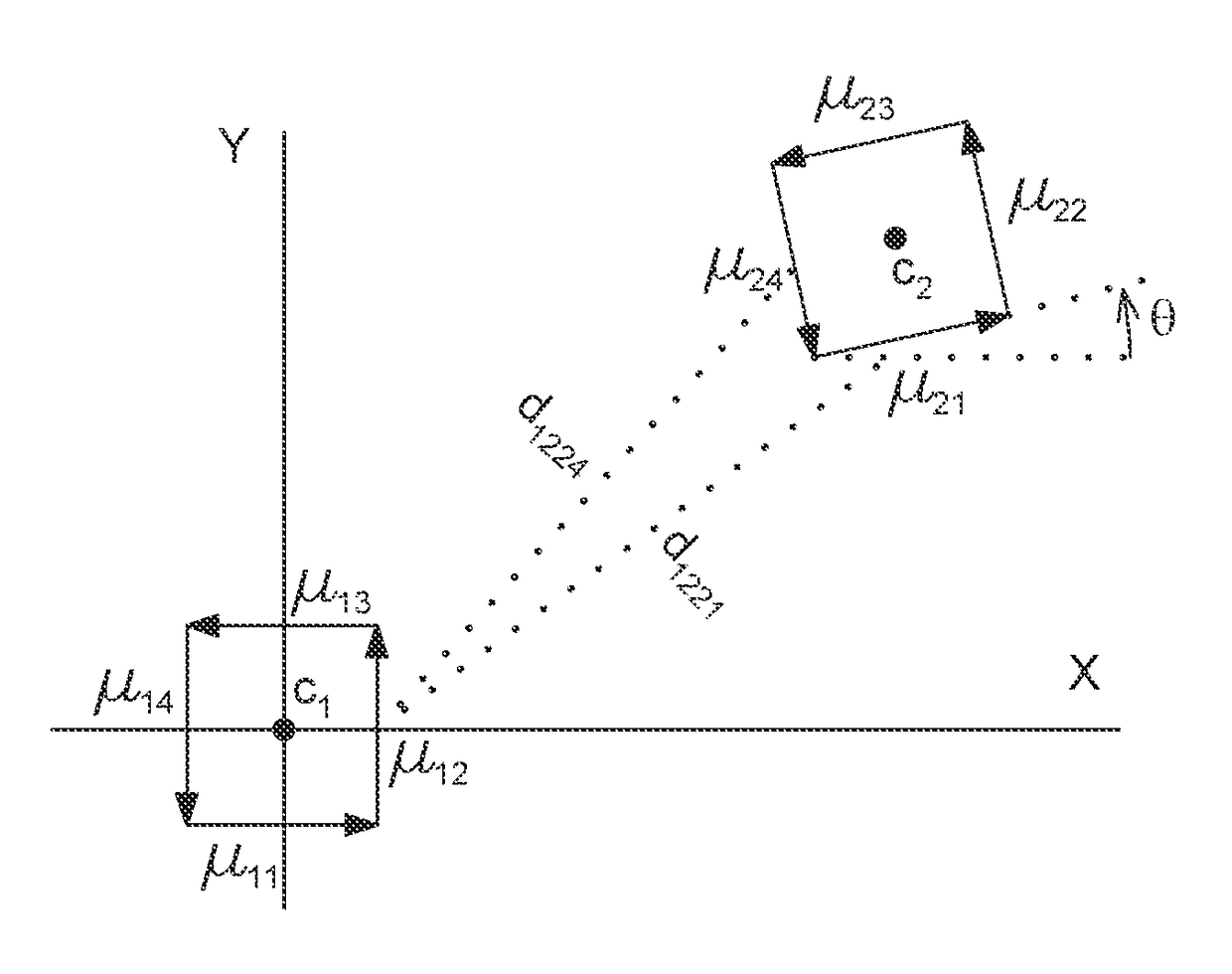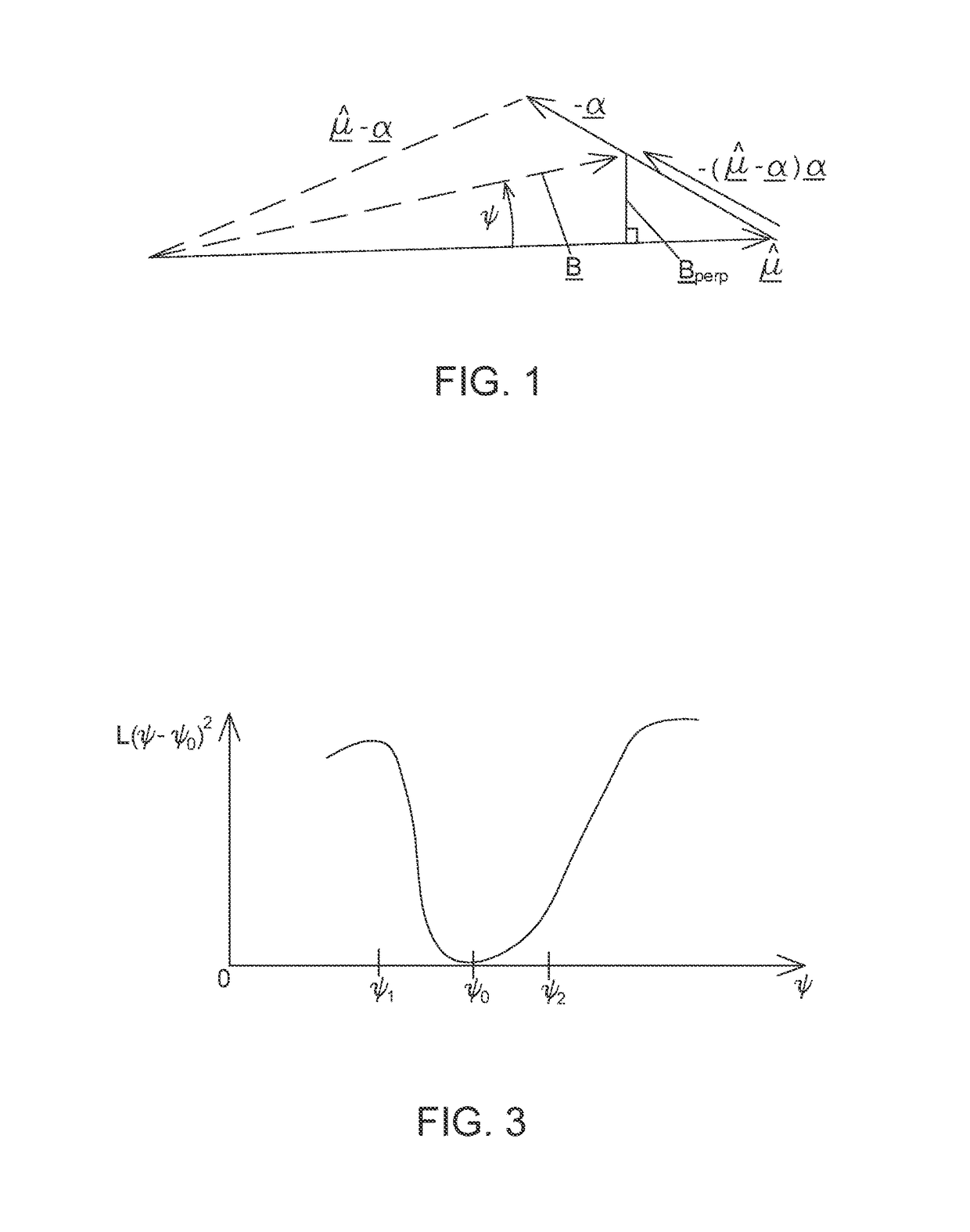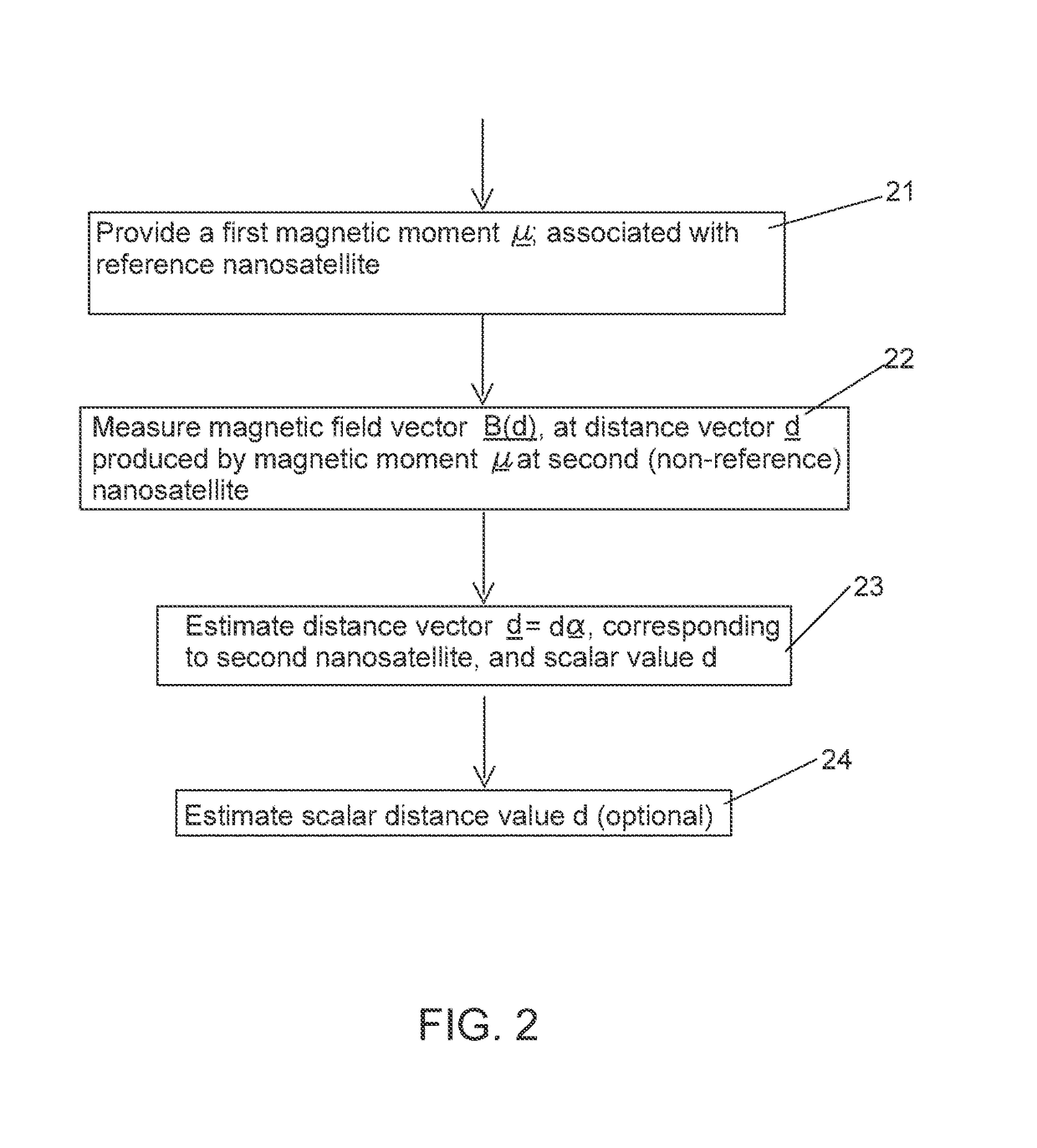Electromagnetic monitoring and control of a plurality of nanosatellites
a technology of nanosatellites and electromagnets, applied in the direction of instruments, mechanical measurement arrangements, cosmonautic vehicles, etc., can solve the problems of large satellites that are impractical for nanosatellite use, requiring significant electrical power, and not allowing relative orientation of the two satellites
- Summary
- Abstract
- Description
- Claims
- Application Information
AI Technical Summary
Benefits of technology
Problems solved by technology
Method used
Image
Examples
Embodiment Construction
[0020]One challenge in monitoring and controlling one or more nanosatellites, using electromagnetic forces and torques, is determination of all relevant components of the three dimensional distance vectors that naturally arise in description of the physical parameters and resulting forces in such an environment. Beginning with the expression in Eq. (2) for a magnetic field flux that is generated by presence of a known magnetic moment μ, one is first confronted with estimation of the distance vector d (with source at a center of the magnetic moment source or associated solenoid(s)) at the point of measurement of the magnetic field B(d). Equation (2) is analyzed to estimate the vector components of d, using the known magnetic moment vector μ and the measurable field vector B(d). Equation (2) is rewritten as
B′(d)=(4π / μ0)B(d)={μ−(μ·d)d / d2} / d3={μ−(μ·α)α} / d3. (3)
d=dα, (4)
where α is a normalized vector (|α|=1) whose direction is parallel to the (unknown) direction of d. The normalized di...
PUM
 Login to View More
Login to View More Abstract
Description
Claims
Application Information
 Login to View More
Login to View More - R&D
- Intellectual Property
- Life Sciences
- Materials
- Tech Scout
- Unparalleled Data Quality
- Higher Quality Content
- 60% Fewer Hallucinations
Browse by: Latest US Patents, China's latest patents, Technical Efficacy Thesaurus, Application Domain, Technology Topic, Popular Technical Reports.
© 2025 PatSnap. All rights reserved.Legal|Privacy policy|Modern Slavery Act Transparency Statement|Sitemap|About US| Contact US: help@patsnap.com



